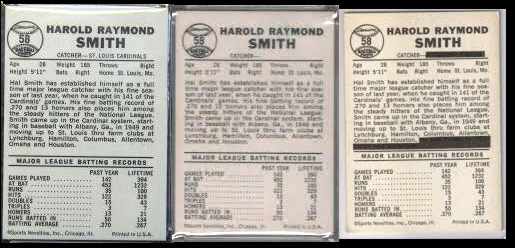1972 Topps #626 'Babe Ruth Award' (Yankees)
| Grade |
NEAR MINT to NM/MINT |
| Book Value |
n/a |
| Our Price |
$ 11.95
Add to cart
|


Below are short bits & pieces on sportscard & baseball trading card collecting.
Please wander around the website for more info, prices, values & images
on vintage baseball, football, basketball, hockey, sport and non-sports cards.
1975/1976 Flag Foundation cards
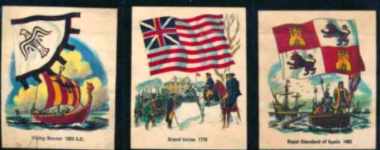
Printed in 1976 by the National Flag Foundation specially for Quality Bakers of America, NY, NY.
1976 Quality Bakers/National Flag Foundation “Bicentennial Flag Stickers” Non-Sport- 1 Complete Set of 31 Stickers- Overall Ex-ExMt, a couple have light creases, these just have a peel-off at the corner instead of a 2 part peel-off, and also tells you to put in “your saver book” unlike the other 1976 set. This set includes different and notable flags having to do with America from 1003-1969.
https://www.baseball-cards.com/vintage-old-non-sport-cards/1975-1976-fleer-national-flag-foundation-stickers-set-2.php
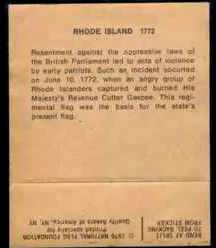
Click for complete
1975/1976 Flag Foundation cards
Note: You may be on that page right now.
|

1984 O-Pee-Chee (OPC) Baseball
Checklist & Values
The (2) top rookie cards that year were of players who never made
the Hall-of-Fame but they sure had impact. Both played in the
'Big Apple'. Darryl Strawberry with the Mets and Don Mattingly
across town with the Yankees.
Mattingly was the top firstbaseman nearly every year he played but
his career was cut short by injury.
Strawberry's played 17 years in which many he was a top star.
It's likely that other factors kept him out of the Hall.
Note: You may be on that page right now.
|

1960 Leaf Baseball Cards
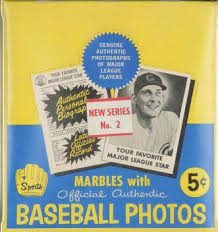
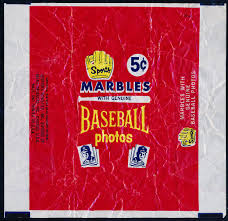
The 1960 Leaf baseball card set featured 144 regular-sized high-gloss
photo quality cards. Back then Topps had a monopoly on baseball cards
packaged with gum or candy so Leaf packaged their cards with marbles.
The marbles were from Sports Novelties Inc. and the cards, called
1960 Leaf, bear copyrights by Sports Novelties Inc.
Hall of Famers Luis Aparicio, Orlando Cepeda and Jim Bunning were the
top stars in the set. The set came in two series, with the second
series high numbers (#73-#144) produced in very limited quantities.
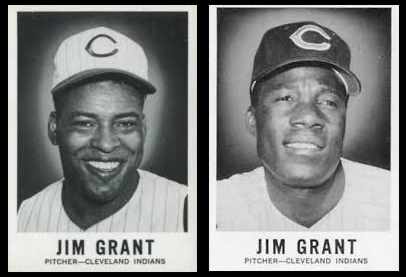
Scarcest card in the set is the corrected version of Jim
'Mudcat' Grant (#25). The more common error variation pictured
Brooks Lawrence on the front with Jim Grant's info on back.
To promote this set, Leaf also produced (8) very scarce Big-Head
PROOF variations.
There were also (3) different variations of the back of Hal Smith's
card #58. Leaf also produced (8) very scarce and extremely expensive,
Big-Head PROOF variations to promote their set.
Click for complete
1960 Leaf Baseball Cards
Note: You may be on that page right now.
|

Tobacco Cards
Starting approximately in 1886, sportscards, mostly baseball cards, were often
included with tobacco products, for promotional purposes and also because the
card reinforced the packaging and protected cigarettes from damage. These sports
cards are referred to as tobacco cards in the baseball card hobby. Over the next
few years many different companies produced baseball cards. Tobacco cards soon
started to disappear as the American Tobacco Company tried to develop a monopoly
by buying out other companies.
They were reintroduced in the 1900s, as American Tobacco came under pressure from
antitrust action and Turkish competition. The most famous and most expensive,
baseball card is the rare T206 Honus Wagner. The card exists in very limited
quantities compared to others of its type because Wagner forced the card to be
removed from printing. It is widely (and incorrectly) believed that Wagner did
so because he refused to promote tobacco, but the true explanation lies in a
dispute over compensation.
Soon other companies also began producing baseball and football cards. Sports magazines
such as The Sporting News were early entries to the market. Candy manufacturers
soon joined the fray and reflected a shift toward a younger target audience for cards.
Caramel companies were particularly active and baseball cards were one of the first
prizes to be included in Cracker Jacks. World War I soon suppressed baseball card
production.





 Printed in 1976 by the National Flag Foundation specially for Quality Bakers of America, NY, NY.
1976 Quality Bakers/National Flag Foundation “Bicentennial Flag Stickers” Non-Sport- 1 Complete Set of 31 Stickers- Overall Ex-ExMt, a couple have light creases, these just have a peel-off at the corner instead of a 2 part peel-off, and also tells you to put in “your saver book” unlike the other 1976 set. This set includes different and notable flags having to do with America from 1003-1969.
https://www.baseball-cards.com/vintage-old-non-sport-cards/1975-1976-fleer-national-flag-foundation-stickers-set-2.php
Printed in 1976 by the National Flag Foundation specially for Quality Bakers of America, NY, NY.
1976 Quality Bakers/National Flag Foundation “Bicentennial Flag Stickers” Non-Sport- 1 Complete Set of 31 Stickers- Overall Ex-ExMt, a couple have light creases, these just have a peel-off at the corner instead of a 2 part peel-off, and also tells you to put in “your saver book” unlike the other 1976 set. This set includes different and notable flags having to do with America from 1003-1969.
https://www.baseball-cards.com/vintage-old-non-sport-cards/1975-1976-fleer-national-flag-foundation-stickers-set-2.php


 The 1960 Leaf baseball card set featured 144 regular-sized high-gloss
photo quality cards. Back then Topps had a monopoly on baseball cards
packaged with gum or candy so Leaf packaged their cards with marbles.
The marbles were from Sports Novelties Inc. and the cards, called
1960 Leaf, bear copyrights by Sports Novelties Inc.
The 1960 Leaf baseball card set featured 144 regular-sized high-gloss
photo quality cards. Back then Topps had a monopoly on baseball cards
packaged with gum or candy so Leaf packaged their cards with marbles.
The marbles were from Sports Novelties Inc. and the cards, called
1960 Leaf, bear copyrights by Sports Novelties Inc. 
